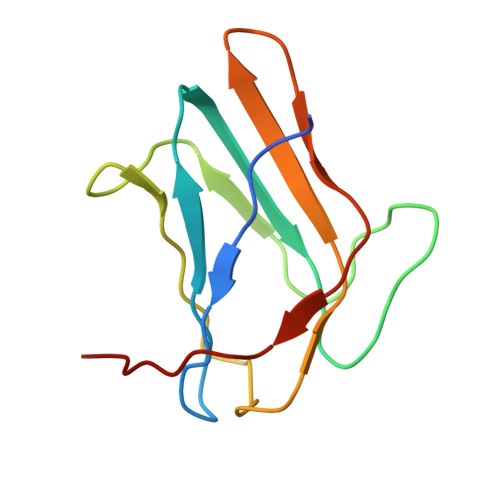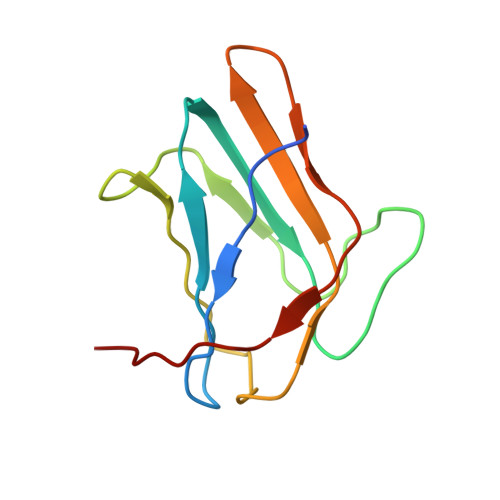Solution structure of the silkworm betaGRP/GNBP3 N-terminal domain reveals the mechanism for beta-1,3-glucan-specific recognition.
Takahasi, K., Ochiai, M., Horiuchi, M., Kumeta, H., Ogura, K., Ashida, M., Inagaki, F.(2009) Proc Natl Acad Sci U S A 106: 11679-11684
- PubMed: 19561300
- DOI: https://doi.org/10.1073/pnas.0901671106
- Primary Citation of Related Structures:
2RQE - PubMed Abstract:
The beta-1,3-glucan recognition protein (betaGRP)/Gram-negative bacteria-binding protein 3 (GNBP3) is a crucial pattern-recognition receptor that specifically binds beta-1,3-glucan, a component of fungal cell walls. It evokes innate immunity against fungi through activation of the prophenoloxidase (proPO) cascade and Toll pathway in invertebrates. The betaGRP consists of an N-terminal beta-1,3-glucan-recognition domain and a C-terminal glucanase-like domain, with the former reported to be responsible for the proPO cascade activation. This report shows the solution structure of the N-terminal beta-1,3-glucan recognition domain of silkworm betaGRP. Although the N-terminal domain of betaGRP has a beta-sandwich fold, often seen in carbohydrate-binding modules, both NMR titration experiments and mutational analysis showed that betaGRP has a binding mechanism which is distinct from those observed in previously reported carbohydarate-binding domains. Our results suggest that betaGRP is a beta-1,3-glucan-recognition protein that specifically recognizes a triple-helical structure of beta-1,3-glucan.
Organizational Affiliation:
Department of Structural Biology, Graduate School of Pharmaceutical Sciences, Hokkaido University, N-21, W-11, Kita-ku, Sapporo 001-0021, Japan.
















